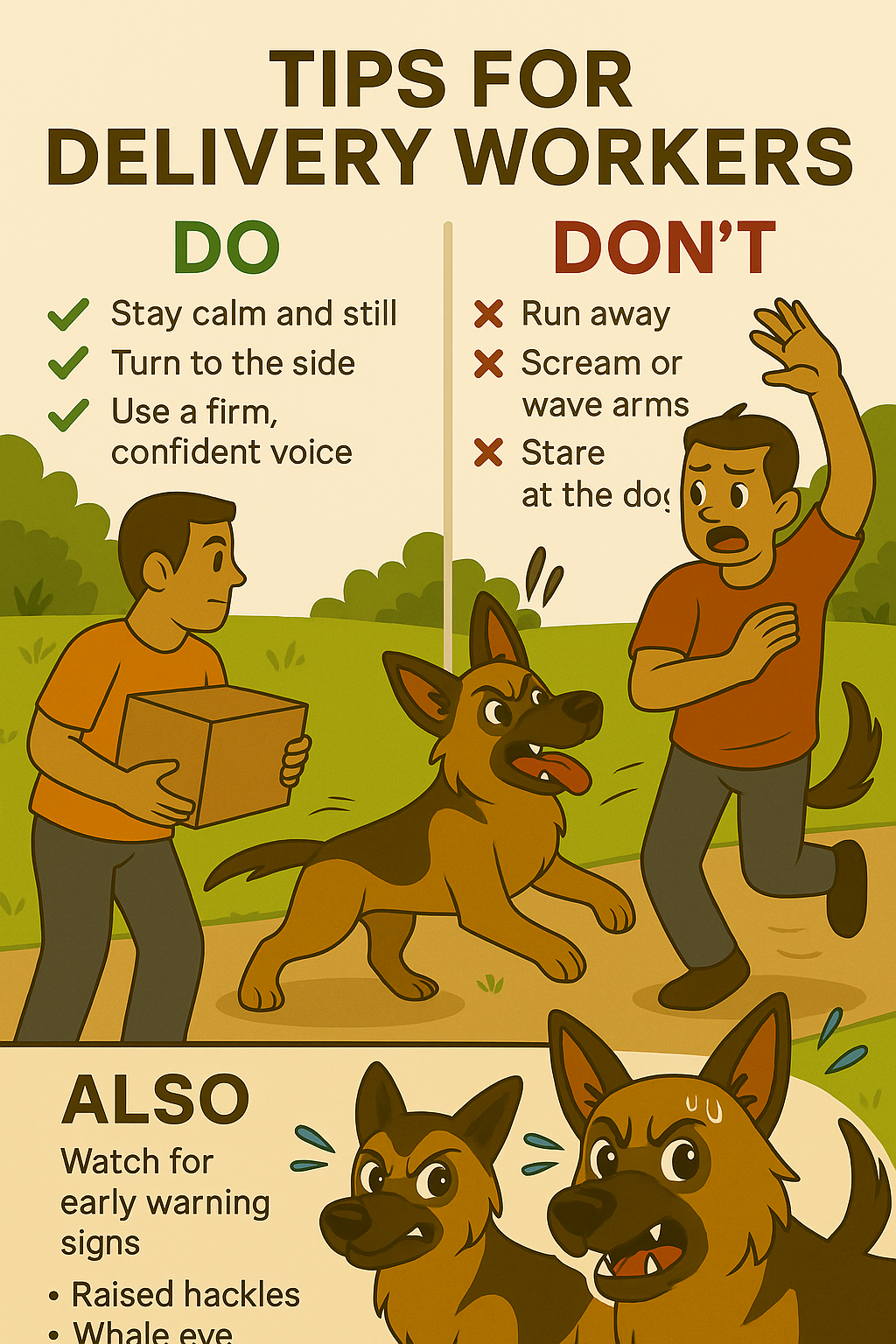
How Delivery Personnel Can Stay Safe When a Dog Runs Up to Them
Partager
For many delivery drivers, postal workers, and couriers, dogs are a regular part of the job. While most dogs are friendly or simply curious, some can be fearful, territorial, or aggressive and an unexpected encounter can quickly escalate into a bite.
Understanding dog behaviour and knowing what to do (and what not to do) can greatly reduce your risk of injury.
Why Dogs Run Up to Delivery Workers
Dogs often run toward delivery personnel because:
-
Territorial instincts — they see you as entering their space.
-
Fear or uncertainty — especially if they haven’t been socialized to strangers in uniforms or carrying packages.
-
Excitement — they want to investigate something new.
-
Protective behaviour — guarding their family, property, or themselves.
Regardless of the reason, your reaction can make the difference between a safe encounter and a dangerous one.
What to Do When a Dog Runs Toward You
-
Stay calm and still
-
Avoid yelling or sudden movements. Dogs pick up on fear and high energy, which can escalate their arousal.
-
Plant your feet and keep a balanced stance.
-
-
Turn slightly to the side
-
Facing a dog head-on can feel confrontational.
-
Standing sideways makes you less threatening while still keeping them in your peripheral vision.
-
-
Avoid direct eye contact
-
Dogs may see prolonged, hard stares as a challenge.
-
Instead, glance around them without locking eyes.
-
-
Use a firm, confident voice
-
Commands like “No” or “Go Home” in a low, steady tone can help interrupt the approach.
-
-
Place an object between you and the dog
-
Use your delivery bag, clipboard, or package as a barrier without swinging or hitting.
-
A barrier creates space and signals the dog to slow down.
-
-
Back away slowly if safe
-
Maintain your sideways stance and move at a calm pace toward a secure area like your vehicle, gate, or porch.
-
What NOT to Do When a Dog Approaches
-
❌ Don’t run away — this can trigger a chase instinct, even in a friendly dog.
-
❌ Don’t scream or flail your arms — this can be interpreted as prey-like behaviour or a threat.
-
❌ Don’t hit or kick unless absolutely necessary — physical retaliation can escalate aggression.
-
❌ Don’t reach out to pet or grab the dog’s collar — even well-meaning dogs may react defensively if startled.
Recognizing Early Warning Signs
Understanding body language helps you assess if the dog is anxious, fearful, or about to bite. Look for:
-
Stiff body posture
-
Raised hackles (fur along the back)
-
Ears pinned back
-
Growling, snarling, or barking with teeth visible
-
Whale eye — showing the whites of the eyes
-
Tail held high and rigid, or tucked tightly under
If you see these signs, assume the dog needs space and avoid advancing toward them.
If a Bite Seems Imminent
-
Keep a barrier between you and the dog.
-
If the dog lunges, turn your body so your side is toward them to protect vital areas.
-
In a worst-case scenario, offer an item (bag, package, jacket) for them to grab instead of you.
Bottom Line for Delivery Personnel
A calm, confident response is your best tool in preventing a dog bite. By understanding canine behaviour, using barriers, and avoiding threatening movements, you can often de-escalate situations before they become dangerous.
If your job regularly puts you in contact with dogs, consider carrying safe deterrents like a dog-safe citronella spray or an ultrasonic device — but always check your company’s policy first.